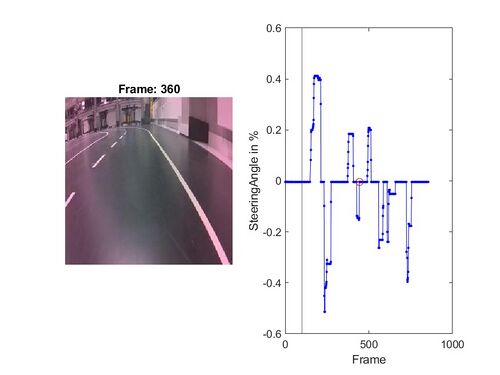Lane Keeping with AI: Unterschied zwischen den Versionen
Zur Navigation springen
Zur Suche springen
| Zeile 13: | Zeile 13: | ||
|} | |} | ||
= Introduction = | = Introduction = | ||
A model car (scale 1:20) equipped with a camera should drive autonomously in the right lane. Usually this is done by image processing. In this bachelor thesis steering angle and video are used to train an artificial intelligence (AI) to drive autonomously on the track. | |||
Lane-keeping refers to the ability of a vehicle to detect and maintain its position within a designated lane on the road. It is a critical function for autonomous driving, helping to enhance road safety and reduce driver workload.Our target location is the mechatronics lab at HSHl. below are videos recorded using videos from a [[JetRacer: Autonomous Driving, Obstacle Detection and Avoidance using AI with MATLAB|JetRacer]] | Lane-keeping refers to the ability of a vehicle to detect and maintain its position within a designated lane on the road. It is a critical function for autonomous driving, helping to enhance road safety and reduce driver workload.Our target location is the mechatronics lab at HSHl. below are videos recorded using videos from a [[JetRacer: Autonomous Driving, Obstacle Detection and Avoidance using AI with MATLAB|JetRacer]] | ||
Version vom 13. März 2025, 14:47 Uhr

| Autor: | Moye Nyuysoni Glein Perry |
| Art: | Project Work |
| Starttermin: | 14.11.2024 |
| Abgabetermin: | 31.03.2025 |
| Betreuer: | Prof. Dr.-Ing. Schneider |
Introduction
A model car (scale 1:20) equipped with a camera should drive autonomously in the right lane. Usually this is done by image processing. In this bachelor thesis steering angle and video are used to train an artificial intelligence (AI) to drive autonomously on the track.
Lane-keeping refers to the ability of a vehicle to detect and maintain its position within a designated lane on the road. It is a critical function for autonomous driving, helping to enhance road safety and reduce driver workload.Our target location is the mechatronics lab at HSHl. below are videos recorded using videos from a JetRacer
Task
- Set up requirements for the lane keeping system.
- Research on solutions for the task (morphological box with technicl creteria).
- Implementation in MATLAB®. Teach a AI to drive in the right lane.
- Use the Video data here.
- Use the recorded steering angle here.
- The data can be visualized with zeigeMessdaten.m (see fig. 1).
- Verify the results with Rundkurs01.avi and Rundkurs02.avi.
- Evaluation of the solutions using a morphological box (Zwicky box) based on technical creteria
- Discussion of the results
- Testing of the system requirements - proof of functionality
- Scientific documentation of every step as a wiki article with an animated gif
Visualized Data of Rundkurs03
Visualized Data of Rundkurs04
→ zurück zum Hauptartikel: Signalverarbeitung mit MATLAB und Künstlicher_Intelligenz